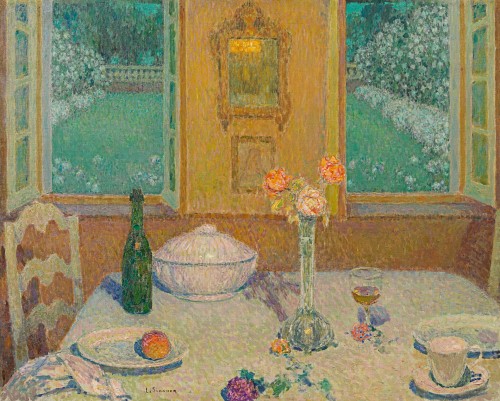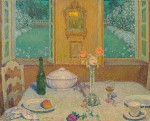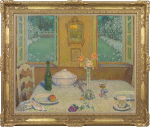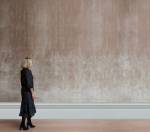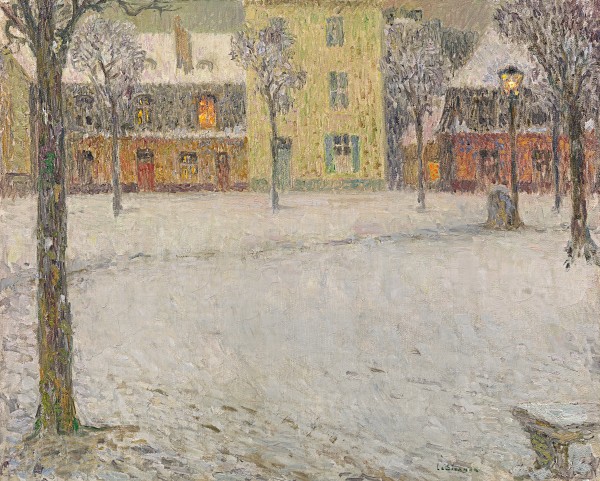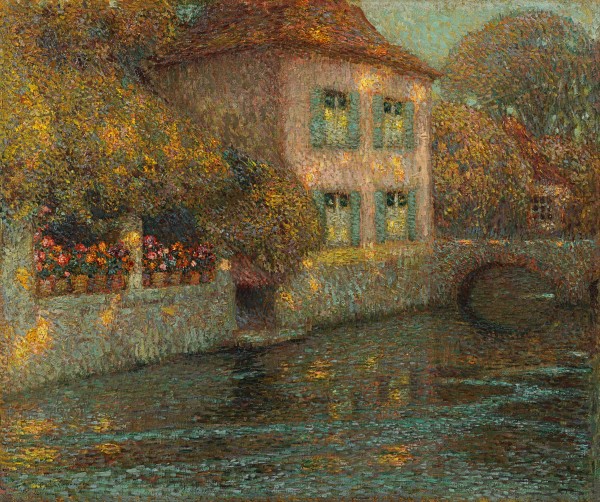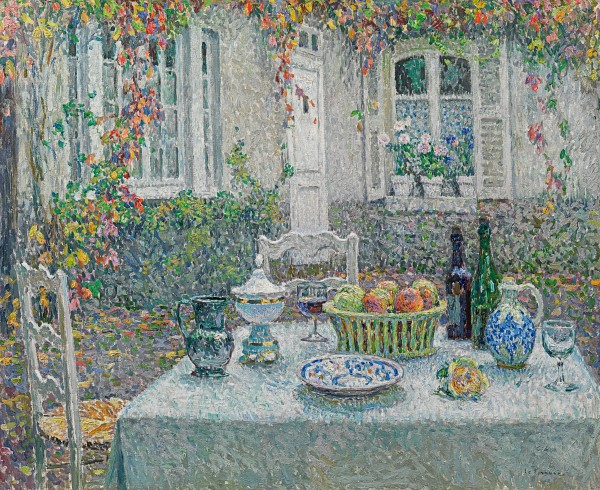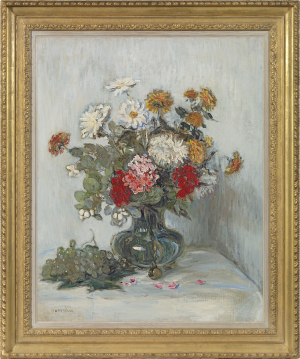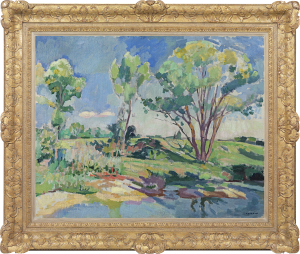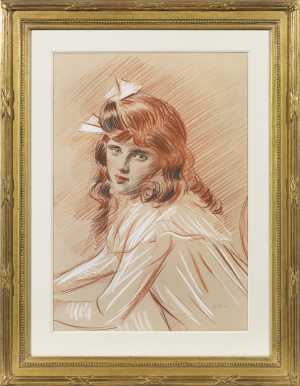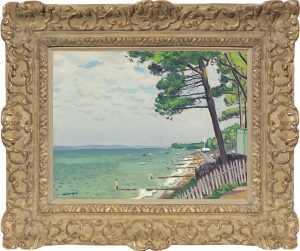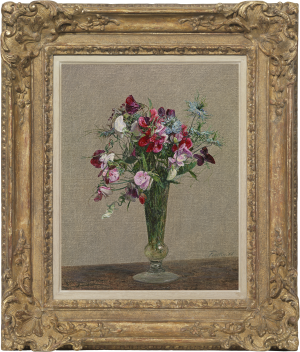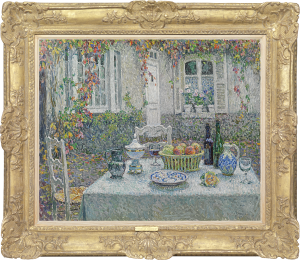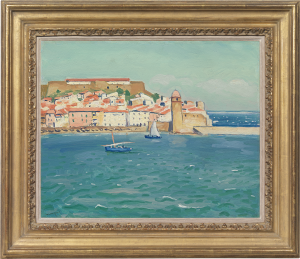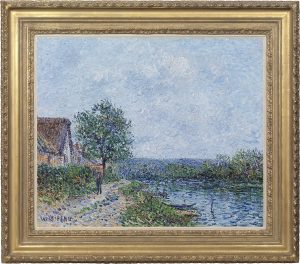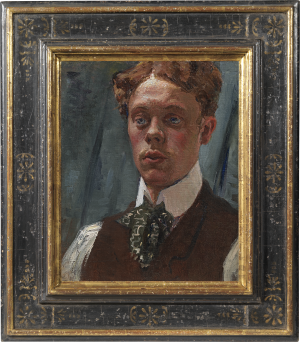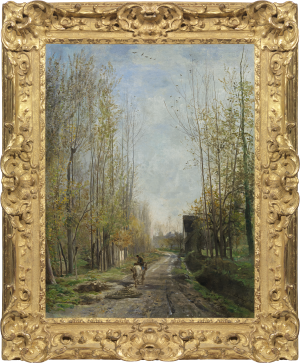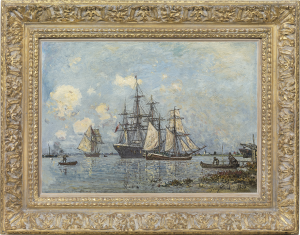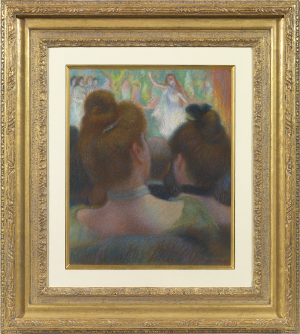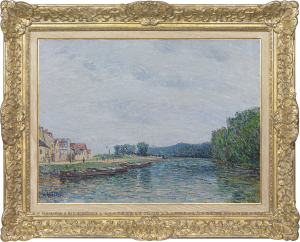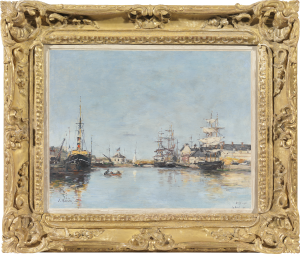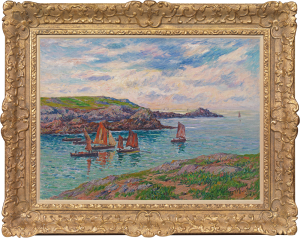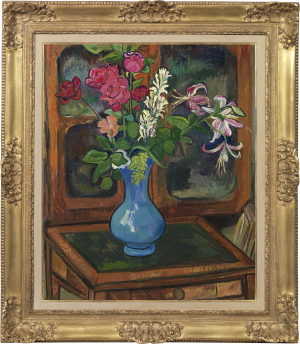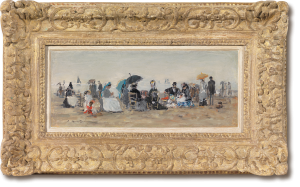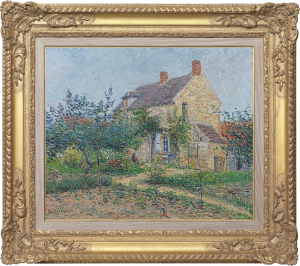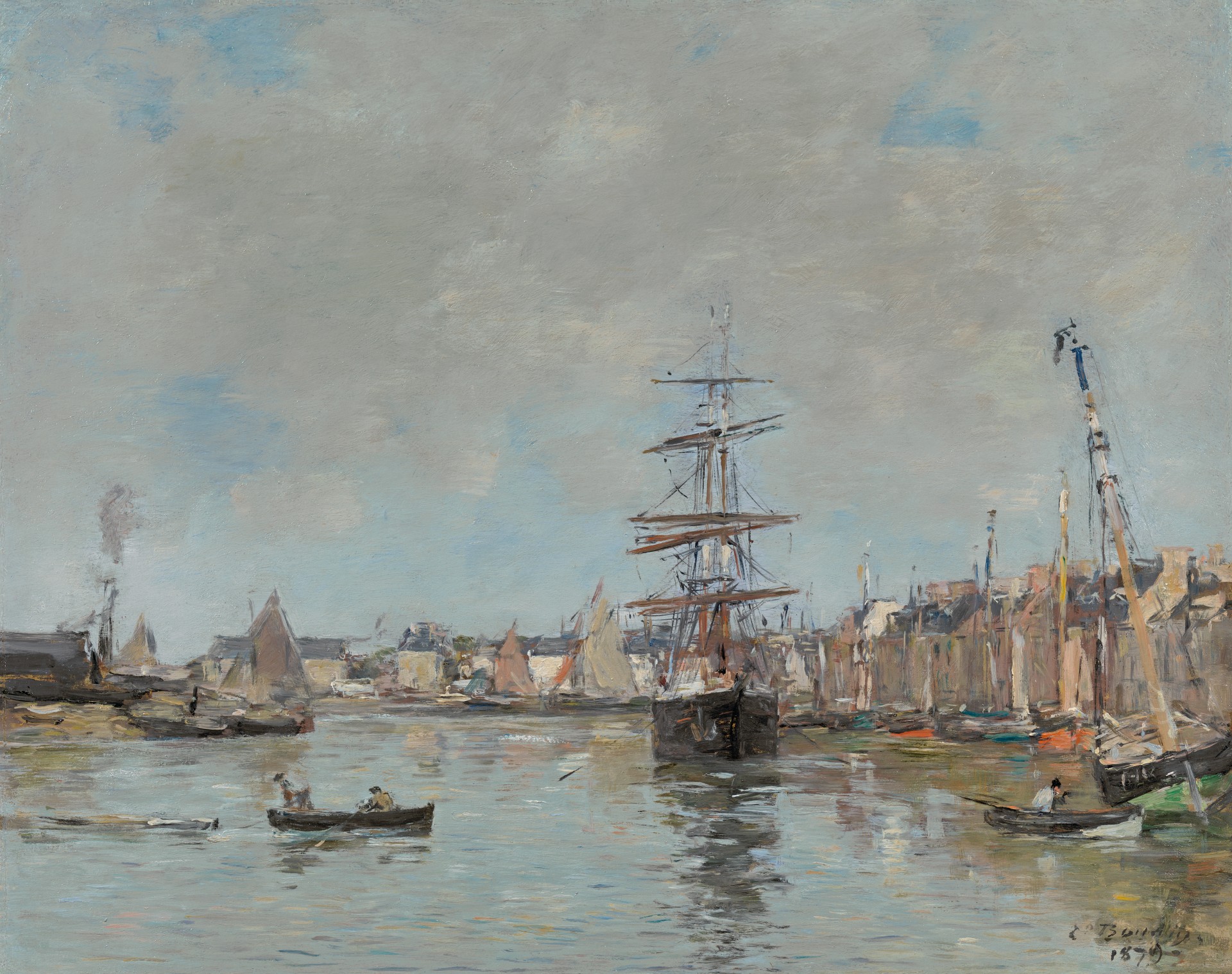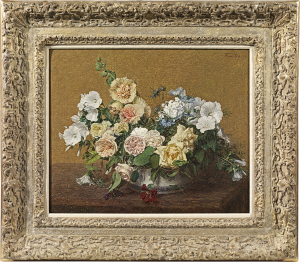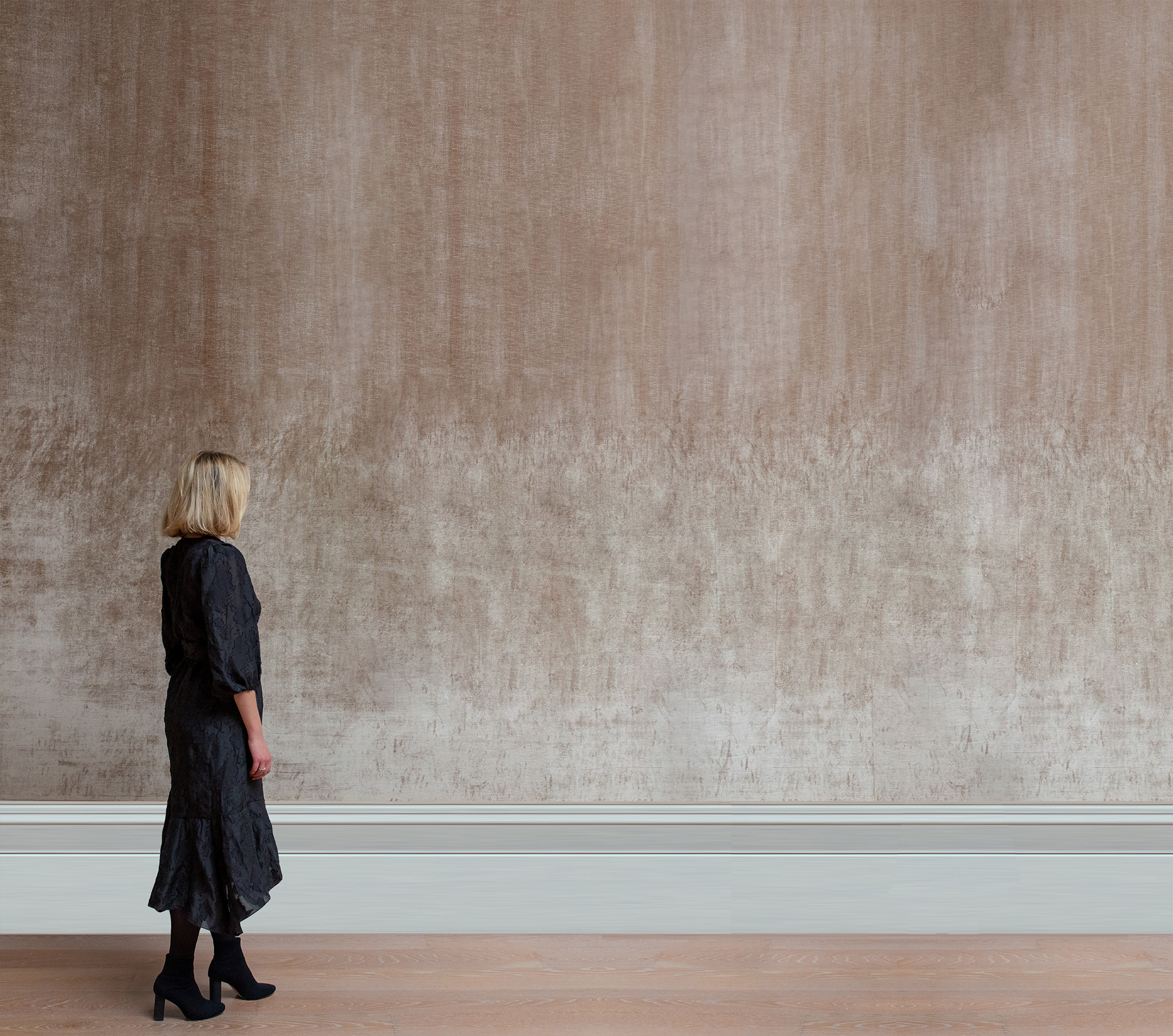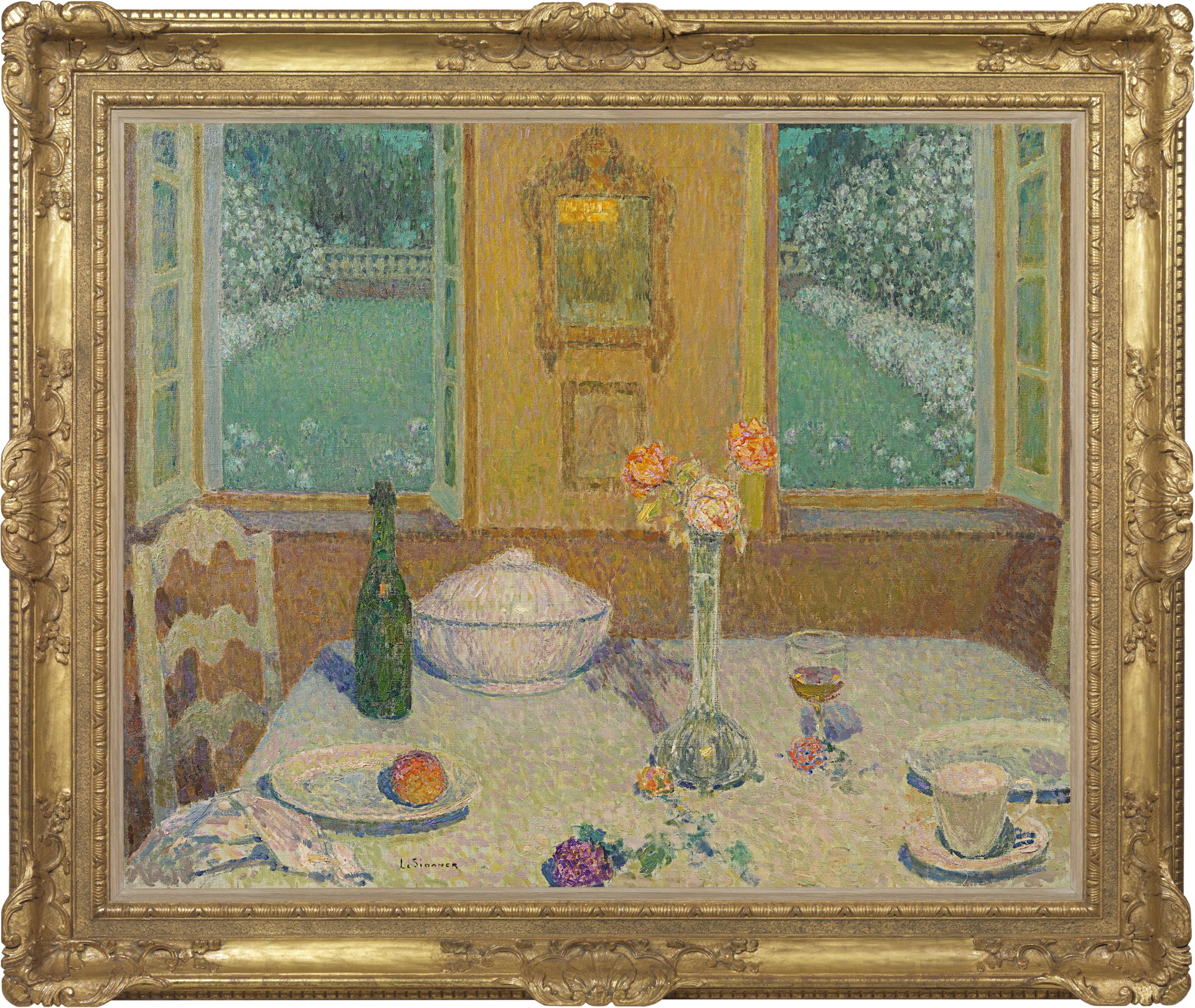Henri Le Sidaner
La table sur le jardin fleuri au crépuscule, Gerberoy
Oil on canvas: 32.4 x 39.5 (in) / 82.2 x 100.3 (cm)
Signed lower left: Le Sidaner
This artwork is for sale.
Please contact us on: +44 (0)20 7493 3939.
Email us
HENRI LE SIDANER
Port-Louis 1862 - 1939 Versailles
Ref: BZ 239
La table sur le jardin fleuri au crépuscule, Gerberoy
Signed lower left: Le Sidaner
Oil on canvas: 32 3/8 x 39 ½ in / 82.2 x 100.3 cm
Frame size: 41 x 48 ½ in / 104.1 x 123.2 cm
In a Louis XIV style carved and gilded frame
Painted in 1930
Provenance:
M Midlé, France, acquired by 1948
Hôtel Drouot, Paris, 25th October 1967
Maurice Sternberg Galleries, Chicago;
from whom acquired by Camille (1921-2021) and Raymond Hankamer (1922-2013), Texas, USA
Exhibited:
Paris, Paul Bornet, Exposition des Trois (La Touche, Laurent, Le Sidaner), 1931
Pittsburgh, Carnegie Institute, Le Sidaner, 1931
Paris, Galerie Charpentier, Exposition Le Sidaner, February 1934
Amsterdam, Galerie Buffa, Exposition Le Sidaner, 1936
Paris, Salon du Groupe Indépendent de la Société Nationale, April 1937
Paris, Musée Galliéra, Rétrospective Le Sidaner, April 1948, no.58 (lent by M Midlé)
Chicago, Maurice Sternberg Galleries, Le Sidaner, 1968, no.19
Literature:
Op de Hoogte, May 1936
Amsterdamsche Courant, 1936
Yann Farinaux-Le Sidaner, Le Sidaner, L’Oeuvre Peint et Gravé, Paris 1989, p.252, no.687, illus.
In 1901 Henri Le Sidaner went to Gerberoy, about six miles north-west of Beauvais in Picardy, in search of a house round which he could develop a garden. The area had been recommended to him by Rodin. Le Sidaner was enchanted by the ‘old sleepy town, steeped in history and gentle nostalgia’[1], where William the Conqueror had fought his unruly son and which had been besieged in the Hundred Years’ War and the sixteenth century Wars of Religion. Le Sidaner rented a small cottage which in 1910 he bought and began to enlarge, adding a garden of terraces, Italianate balustrades and pavilions, overlooking half-timbered houses, cobbled streets and the rolling countryside beyond. The house was bitterly cold and Le Sidaner spent only one winter there, retreating otherwise to the comforts of Versailles, the South of France or elegant European cities such as Venice and London. In the summers Gerberoy was his paradise and the inspiration for many paintings depicting the soft grey, rambling lanes and nooks of his garden illuminated with oblique light. It became as important to him as Giverny to Monet or the garden at Marquayrol to Henri Martin.
Le Sidaner was fascinated by crépuscule, the hour ‘entre le chien et le loup’ when colours become mysterious. Here, the soft yellow glow of the interior, lit by the light reflected in the mirror, contrasts with the pulsating green and white of the garden beyond. Le Sidaner created a White Garden in the first years of the twentieth century on the terrace to the south side of his house, influenced by English garden design, but predating by some three decades Vita Sackville-West’s famous White Garden at Sissinghurst. Glimpsed beyond the open windows in this painting are the borders of white oeillets mignardises or dianthus. Their sweet scent mingles with that of the white roses, drifting through the open summer windows. The white flowers glow in the dusk. Inside, the table is laid for an elegant but simple supper: human presence is implied, but rarely, in Le Sidaner’s mature work, do people appear.
The painting demonstrates Le Sidaner’s mastery of colour, tone and composition. The roses in the vase, composed of staccato strokes of pink, orange and yellow, are echoed in the yellow, orange, pink and deep violet of the orange on the white plate. Le Sidaner unifies the composition by working varied shades of lilac and purple across the canvas, contrasting with the yellow tones. The intense purple-pink of the flowers in the foreground is picked up in the subtler shade of violet among the shadows of the wine glass and the shadow thrown by the tall central vase, fading out into the plum and brown tones of the wall under the windows. The crepuscular greens of the garden are echoed in the emerald green of the wine bottle, bringing the dominant colour of nature into the house. A spark of orange light has alighted on the bottle, a delicious touch of warmth, harmony and domestic contentment.
A compositional study for this painting was included in the Le Sidaner exhibition at the Maurice Sternberg Galleries, Chicago in 1968, no.7, illus.[2].
HENRI LE SIDANER
Port-Louis 1862 - 1939 Versailles
Henri Le Sidaner was born in Port Louis, Mauritius in 1862, the son of a shipbroker of Breton descent. At the age of ten his family moved to Dunkirk and in 1880, after the death of his father, to Paris. Le Sidaner entered the studio of Alexandre Cabanel at the Ecole des Beaux-Arts in 1884, but was more inspired by Manet than by his master’s dry academicism.
In 1889 he moved to Etaples, where he met the painters Eugène Chigot and Henri Duhem, who were to remain lifelong friends. Le Sidaner made plein-air paintings of Breton peasants and fishermen in a subdued palette.
In 1892 a grant allowed him to paint in Florence, Venice and Katwijk in Holland. In 1894 he settled in Paris, transferring his allegiance from the Salon to the more avant-garde Société Nationale des Beaux-Arts. In this period Le Sidaner produced paintings such as the 1896 Morning (Musée de Dunkerque) and Twilight (private collection), which combine elements of Impressionist technique with Symbolist themes. That year he signed a contract with the Mancini Gallery.
In 1898 Le Sidaner turned decisively towards the highly individual style, building on the innovations of Impressionism, that would characterise his work for the rest of his life. In 1898 he went to Bruges with his lover Camille; their son Louis was born in Paris in October, although the couple was based in Bruges for another year. In 1899 they returned to Paris and Le Sidaner became one of the group of artists represented by Galeries Georges Petit, which would give him financial stability and remain his dealer until 1930.
Le Sidaner, keen to buy a country house around which he could develop a garden, was advised by Rodin to visit the terrain near Beauvais. In 1901 he rented a cottage in the picturesque town of Gerberoy (Seine et Oise). He bought it in 1904 and in 1910 greatly enlarged the house, creating a paradisiacal garden which provided the inspiration for many of his later paintings. Le Sidaner developed a poetic style of Post-Impressionism which explores the qualities of light and objects through harmonies and counterpoint of subtle tones. After 1900 he rarely included figures in his paintings, implying human presence through his interest in depicting a community of ancient houses, or a table set for tea. Le Sidaner’s works, with their evocation of mood and emotional engagement with landscape, have affinities with the music of ‘Impressionist’ composers such as Claude Debussy.
Le Sidaner travelled in search of new motifs, wintering in Venice or London to escape the freezing cold of Gerberoy. From 1914 his family was based at a comfortable house in Versailles and summered in Gerberoy. From around 1920 his paintings employ a lighter palette and sparer, more dreamlike compositions. He was awarded the Légion d’Honneur in 1913 and the First Prize at the 1925 Pittsburgh International. Henri Le Sidaner died in Paris in 1939.
[1] Farinaux-Le Sidaner op. cit., p.14.
[2] Farinaux-Le Sidaner, ibid., p.379, no.1221, illus.

